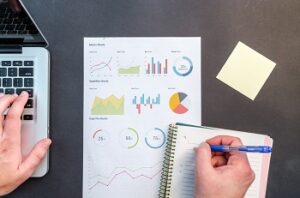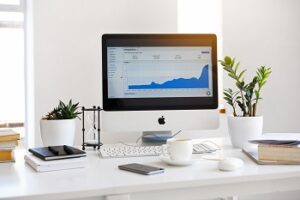
The Basics
So, what exactly is A/B testing? To put it simply, it’s when you take two (or more) versions of the same website and see which one performs best over time. After a certain amount of time/visitors, you should have a collection of data that clearly illustrates which version of your website your customers prefer, and then you can implement (or keep) the best version.
The Benefits
There are many reasons why Shopify A/B testing is so advantageous to business owners. The big one is that knowledge is power. If you’re not experimenting with site optimization, you won’t know if you’re missing out on good design choices. Say you test Version A of your site using a blue and red color scheme, and Version B using a green and orange color scheme. At the end of the test, you should be able to tell which version performs better, and then you can use that color scheme in marketing materials, product packaging, and so on. But if you only ever use blue and red, you won’t know how much of an advantage, or disadvantage, those color choices are.

The Variables
We’ve given you a few examples of metrics that can be tested, but the opportunities are endless. Even very subtle changes—a word here and there, for instance—can have profound effects on the performance of your store.
Here are some of the most commonly tested variables:
- Product images
- Videos
- Customer reviews
- Navigational buttons
- Color schemes
- Logos
- Page layouts
- Checkout cart formats
- Content and copy
- Calls to action
- Font size and style
- SEO strategies
- Mobile optimization
Best Practices
For Shopify A/B testing to be successful, you must have an appropriate amount of data. After all, if three people place an order on Version A of the site and two people place an order on Version B, that doesn’t give you any real information. Those figures could easily be coincidences.
Fortunately, there are A/B testing tools available to help you determine how many visitors you will need, as well as how long the test will need to run for, to gain enough data to be able to trust the results of your experiment. Optimizely is one of the most popular A/B testing tools out there, and it includes a test sample size calculator for implementing testing best practices.
How to Select the Right Variables
Besides making sure your experiment is conducted properly, you also need to think about the user’s experience to select variables that will produce meaningful results. While minor changes can yield significant performance increases, you don’t want to waste time with Shopify A/B testing if the changes don’t actually matter. Try to put yourself in your customer’s shoes so you can select variables that will make an impact.
Consider these questions as you decide how to start your first A/B testing experiment:
- What do your competitors’ web stores look like?
- What does the visitor want from your company?
- Why did the visitor go to your page in the first place?
- How did the visitor find your page?
- Which features on your website don’t inspire confidence?
- What is your primary conversion goal for each page?
Once you’ve taken a good hard look at your site, you should be able to come up with a hypothesis to initiate your first Shopify A/B testing experiment.
For instance, you could say, “I bet that if I had longer, more descriptive product descriptions, people would be more likely to order my products.”
From there, you could use an A/B testing tool like Optimizely to create website Version A with longer product descriptions and Version B with succinct product descriptions. 50 percent of your audience is directed to Version A and the other 50 percent to Version B, and the only differences are the modified product descriptions.
Once you’ve accrued enough data to determine which style of product descriptions performs best, you can go with either A or B with confidence. As you can see, Shopify A/B testing takes the guesswork out of modifying and optimizing your web store.
Contact Coalition Technologies for Your Shopify Needs
Whether you need assistance optimizing your Shopify web store or you want to create a brand new Shopify site from the ground up, Coalition Technologies has the skills and experience to bring your vision to life. We’ve built and worked on hundreds of Shopify sites, and the results are consistently exceptional.
In addition to helping you with A/B testing, our professionals can assist you with your Shopify store design, SEO, marketing, coding, content, and anything else that requires an expert’s touch. Our creative team works with you to create the site of your dreams, so you can reach a larger audience and improve your bottom line.
If you have any questions about Shopify A/B testing or anything else involving the Shopify platform, our friendly experts are just a phone call or email away. For a free consultation, please call us at 310.907.7949 or send an email to [email protected]. Promote ongoing growth by using A/B testing to boost your Shopify web store’s long-term performance.



